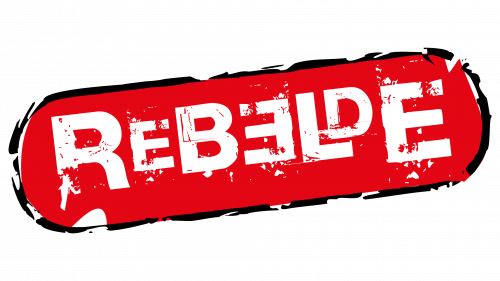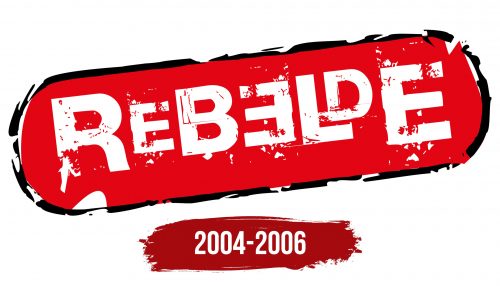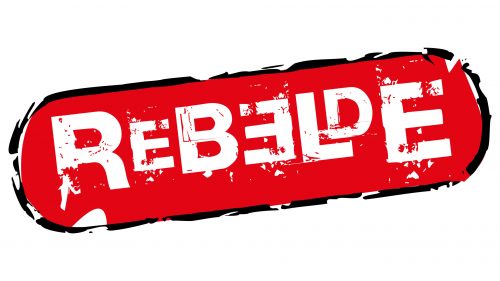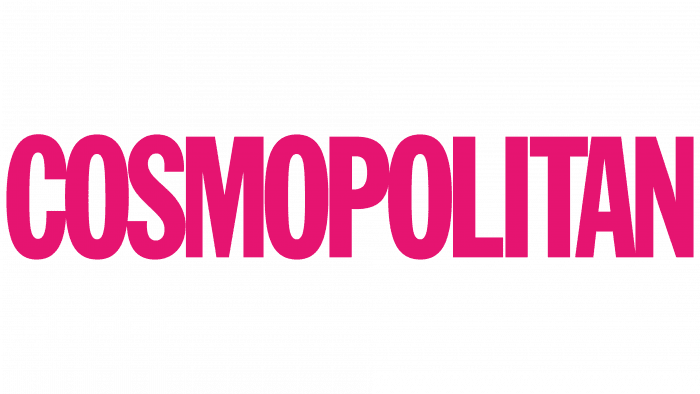The Rebelde logo is vibrant, avant-garde, and rebellious. The emblem embodies anarchy and a readiness to oppose conventional standards, challenging the rules and rejecting the conventions that reign within the elite school.
Rebelde: Brand overview
In 2004, television viewers in Mexico and other Latin American countries were introduced to the telenovela “Rebelde,” which quickly became popular among the youth. Created by Cris Morena and produced by Pedro Damián for Televisa, this telenovela was the Mexican adaptation of the Argentine series “Rebelde Way.” “Rebelde” tells the stories of six teenagers attending an elite private school, where their shared love for music unites them despite differences in character and life circumstances.
“Rebelde” rapidly evolved into a cultural phenomenon, attracting millions of viewers in Mexico and Latin America, the United States, Europe, and Asia. The series’ popularity led to an extensive range of merchandise, numerous fan clubs, and even concerts by the group RBD, which was formed based on the series and attracted large audiences.
The series aired from October 4, 2004, to June 2, 2006, and its popularity led to the creation of a sequel named “Rebelde,” released on Netflix in 2022. This sequel became the fifth global version of the original series and continued its story. Years after the original series ended, “Rebelde” remains a significant part of pop culture, evoking nostalgia in old fans and attracting new viewers. The series has left a significant mark in the history of telenovelas and television entertainment, and its influence is still felt today.
Meaning and History
The series’ logo conveys the youth of its participants, their unconventional worldview, and the process of personal development—the design features of the emblem point to life in a closed institution. The symbol was likely developed by the Canal de las Estrellas network, which originally aired the series.
What is Rebelde?
A Mexican series, a remake of the Argentine franchise “Rebel’s Way,” created by television producer Cris Morena. In Pedro Damián’s version, the school’s name, location, and character names were changed to be more authentic to Mexico. The telenovela aired for three seasons (440 episodes) from 2004 to 2006.
2004 – 2006
The series’ emblem is an oval plaque with the title written on a red background. The logo’s shape resembles a sign or a placard on a building. The action of the telenovela takes place in an elite boarding school, and the emblem is like a nameplate for the institution.
The limited background conveys enclosed space. The students live and study at Elite Way. The red background reflects the boiling passions within the school, the struggle for power, and the confrontation between the rich and the talented. It speaks of first loves, fiery arguments, and the beauty of the music created by the main characters.
The aging effect emphasizes the impressive age of the school and also speaks to the informal style of music, the uniqueness, and the distinctive teenage culture represented by the band members.
The essence of the name, which translates to “rebels,” is conveyed in the font style with letters turned in different directions and varying in size. The choice reflects protest and opposition to conventional standards and rules and emphasizes the differences between students and their individuality. Each series participant is a vivid personality who goes through trials and difficulties, tempering their character.
The youngsters need to learn to believe in themselves and not be afraid. The unusual inscription also speaks of courage and readiness to tell the world about the RBD group formed by the students.
Font and Colors
The combination of red and black creates a sense of contrast between the proper, systematic classes, schedules, and discipline of the school and the emotion-filled events outside the classrooms.
- Black represents boundaries, requirements, and mandatory disciplines.
- Red signifies emotions that overflow.
In the combination and struggle of these opposites, strong, creative personalities of musicians and future country leaders mature.
The font of the inscription is unique due to the rotation of letters and play with sizes. The wear and tear make each symbol special, just as the personalities of the band members differ.







